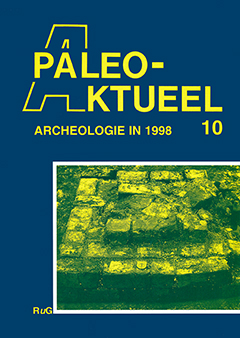HOUWINGE HAM (GR.) NA VIJF EEUWEN WEER OP DE KAART
Samenvatting
In the municipality of Reiderland the main soil type is marine clay. These late mediaeval sediments buried a peat landscape occupied by villages of the extended type, most of which had been moved to higher ground during and after the Dollardfloods. Houwingeham did not succeed in doing so, partly through lack of Pleistocene elevations in the neighbourhood. After 500 years the drowned village site was identified in the course of a reconstruction programme of transforming arable land into a nature park. The plan of the parish church was mapped by means of magnetometry and two moated keeps were uncovered during the removal of the clay sediments. Circumstances for conserving organic matter had been very favourable, as was demonstrated by many wooden finds. It appeared that the village and its grounds had already been cleared and ahandoned before being drowned by Dollardfloods.

